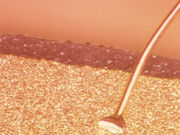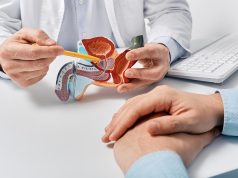Laser group has discrete superiority at two months of treatment; better results in the sixth month
TUESDAY, Jan. 31, 2017 (HealthDay News) — For elective surgery scars, application of super-pulsed fractional CO2 laser application improves the aesthetic quality of scars more than silicone gel, according to a study published online Jan. 24 in Lasers in Surgery and Medicine.
Luiz Ronaldo Alberti, M.D., Ph.D., from the School of Medicine at the Federal University of Minas Gerais in Brazil, and colleagues conducted a randomized prospective study involving 42 patients with recent scars of up to three weeks in patients with a I to IV Fitzpatrick skin phototype. The patients received either super-pulsed fractional CO2 laser applications (10,600 nm fractional CO2, set at a density of 20 percent and an energy of 10 mJ, a scanner of 03 × 03 mm, and a pulse repetition time of 0.3 seconds) or an application of silicone gel to the scar. The authors assessed the scars aesthetically by applying the Vancouver scale in the second and sixth months.
The researchers observed a discrete superiority in the laser group at two months of treatment, compared to the silicone group, in both the percentage and significance concerning flexibility (P = 0.05) and pigmentation (P = 0.01). In the sixth month, the laser group presented better results (P = 0.03).
“The early use of the fractional CO2 laser contributed to improving the aesthetic quality of scars from elective surgeries in the second and in the sixth months,” the authors write.
Full Text (subscription or payment may be required)
Copyright © 2017 HealthDay. All rights reserved.








